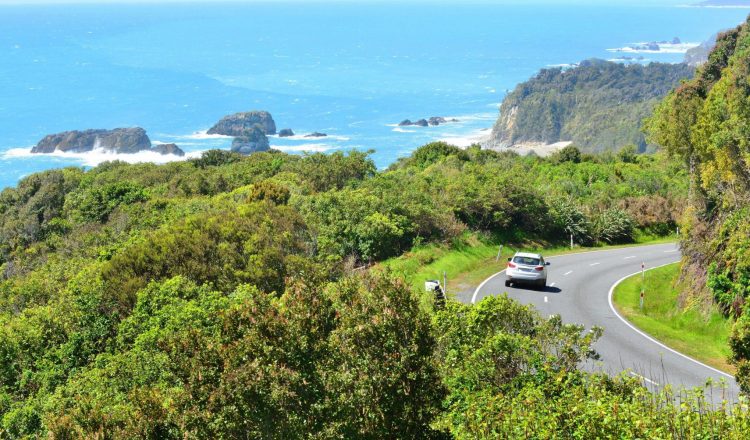Warrent của tình trạng
Bảo đảm tình trạng (WoF) là một cuộc kiểm tra thường xuyên để đảm bảo rằng xe của bạn đáp ứng các tiêu chuẩn an toàn bắt buộc.
Công việc của bạn là luôn giữ cho chiếc xe của bạn luôn ở trong tình trạng WoF. Ví dụ: mặc dù lốp xe trên xe của bạn có thể hết hạn vào ngày kiểm tra bảo hành, nhưng bạn sẽ cần phải thay chúng ngay khi lốp xe đạt độ sâu tối thiểu. Nếu bạn đợi cho đến lần kiểm tra tiếp theo trước khi thay thế chúng, bạn sẽ tăng nguy cơ gặp sự cố hoặc bị phạt.
Tần suất yêu cầu WoF
Các phương tiện được đăng ký lần đầu ở bất kỳ đâu trên thế giới vào hoặc sau ngày 1 tháng 1 năm 2000 sẽ cần kiểm tra WoF hàng năm trong suốt thời gian hoạt động của chúng.
Đối với các loại xe mới, sau khi kiểm tra ban đầu, một cuộc kiểm tra khác sẽ không được yêu cầu cho đến khi kỷ niệm 3 năm đăng ký đầu tiên của chúng.
Khoảng thời gian WoF được cấp tính dựa trên ngày đăng ký lần đầu của xe ở New Zealand hoặc ở nước ngoài và được mô tả chi tiết hơn trong bảng bên dưới.
Đi đâu để kiểm tra xe
Có khoảng 3200 trung tâm WoF ở New Zealand.
Lái xe là bất hợp pháp…
- Nếu nó không đáp ứng đủ yêu cầu của WOF.
- Nếu nó không hiển thị nhãn WoF hợp lệ.
Bạn chỉ có thể lái chiếc xe của mình trên đường trong những trường hợp này khi mang nó đi đâu đó để sửa chữa hoặc mua một chiếc WoF mới – với điều kiện là bạn phải an toàn.
Kiểm tra bảo đảm bao gồm những gì Kiểm tra
Việc kiểm tra WOFs là một kiểm tra an toàn chung. Các khía cạnh được kiểm tra được nêu trong hướng dẫn sử dụng yêu cầu kiểm tra xe của chúng tôi (liên kết bên ngoài) (VIRM) và bao gồm:
- tình trạng lốp xe (bao gồm độ sâu lốp xe)
- Hoạt động phanh
- Điều kiện cấu trúc (gỉ không được phép ở một số khu vực nhất định)
- đèn
- Kính (là kính chắn gió của bạn an toàn?)
- Kính chắn gió máy giặt và cần gạt nước
- Cửa ra vào (họ mở và đóng một cách an toàn?)
- dây an toàn (không được hư hỏng hoặc phai mờ quá; khóa phải hoạt động đúng cách)
- túi khí (nếu lắp)
- Đồng hồ tốc độ (phải làm việc)
- Lái và hệ thống treo (phải an toàn và an toàn)
- xả (không phải có rò rỉ và khí thải không được khói hoặc to hơn so với hệ thống ống xả ban đầu)
- hệ thống nhiên liệu (không phải có rò rỉ).
Nếu bạn đã sửa đổi xe hơi, xe gắn máy, xe van hoặc xe nhẹ khác, bạn có thể cần giấy chứng nhận xe có khối lượng thấp .
Điều gì không phải là một bảo đảm
Một WoF không phải là một cuộc kiểm tra trước khi mua hàng. Nó không bao gồm nhiều lĩnh vực về tình trạng của một chiếc xe. Ví dụ, nó không kiểm tra:
- Động cơ, ly hợp, hộp số và hộp số và vi sai
- Mức độ và điều kiện của chất bôi trơn
- Độ dày phanh pad hoặc tuổi thọ, trừ khi chúng rõ ràng dưới giới hạn an toàn
- Điều kiện làm việc sơn và một số rỉ sét trong các khu vực phi kết cấu.
Nhãn lệnh của bạn
Nếu xe của bạn vượt qua kiểm tra WOF, thanh tra viên sẽ dán nhãn WOF ở bên trong kính chắn gió phía trước của bạn, bên cạnh người lái. Bạn cần nhận lệnh tiếp theo trước ngày hết hạn trên nhãn.
Khi xe của bạn không được kiểm tra bảo đảm
Nếu xe của bạn không được kiểm tra WOF, bạn không thể lái xe trên đường, trừ khi bạn mang nó đi đâu đó để sửa chữa hoặc lấy một WOF mới – và an toàn để làm như vậy.

















































